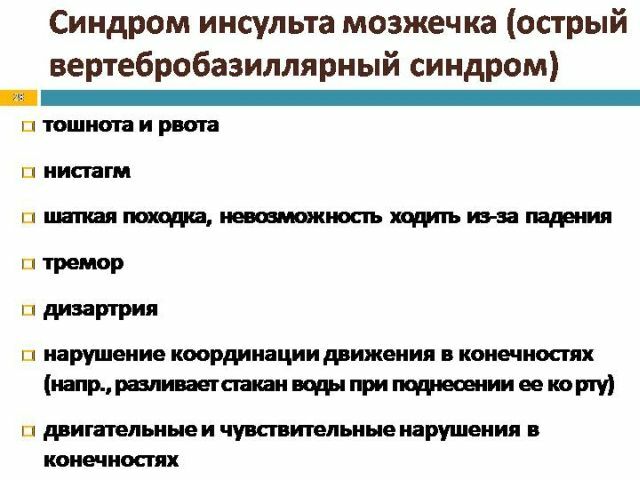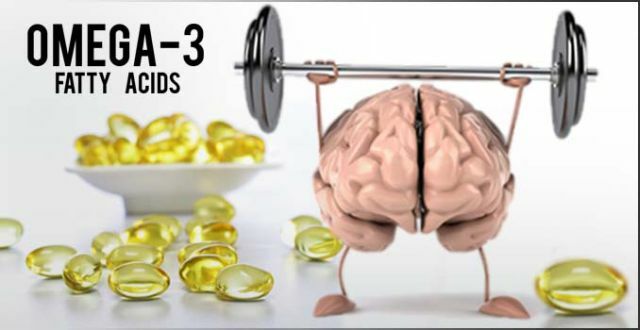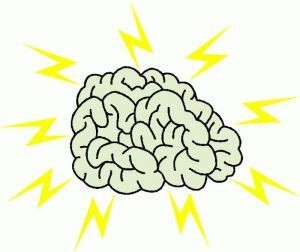Coma is caused by stroke cerebrovascular dysfunction and all body systems, which thus exhibits a protective response against the background of a strong stress exposure. A kind of deep sleep needed to avoid death.

Why the patient goes into a coma
Coma after a stroke is a consequence reduce or stop blood flow in some areas the brain, and the patient sinks into unconsciousness with a partial loss of reflexive reactions.
There is an acute ischemic vascular and breakthrough bleeding in the brain (hemorrhagic stroke) And cerebrovascular accident with damage to the brain tissue, its dysfunction due to embarrassment or cessation of blood flow to a particular department (ischemic pathologies).
Includes such factors leading to a state of coma:
- cerebral hemorrhage with high blood pressure;
- insufficient blood supply to one or several internal organs;
- brain edema with hormonal imbalance and a reduced oxygen content in the body or specific organs and tissues;
- degeneration of the walls of large vessels;
- intoxication;
- systemic pathologies characterized by the destruction of connective tissue and progressive course, when in development of the disease is based immunopathological process violates exchange collagen (collagen);
- avitaminosis;
- various blood disorders.

At a hemorrhagic stroke, coma can be lethal, because there death of large areas of the brain, and in ischemic - patients are in most cases self-go out of the coma.
the degree of coma
Distinguish such extent coma in hemorrhagic cerebral stroke:
- First - it is characterized by a predominance of inhibitory processes of excitation processes. The patient does not respond to pain and light stimuli. The patient can make swallowing action to roll.
- The second - by the absence of responses and pupillary constriction. Breath of the patient is uneven, there may be spontaneous muscle contraction. There is a risk of death in a coma after a stroke.
- Third - it is characterized by the absence of reflexes, possible convulsions. Body temperature is strongly reduced, fixed involuntary bowel movements. These symptoms arise against damage to the brain.
- Fourth - characterized by lack of normal tone of skeletal muscles and internal organs, the condition develops due to a general power failure. Pupils dilated, respiration is characterized by long delays. When the patient has a deep coma, regain consciousness is no longer possible.
clinical picture
There are some signs of coma, stroke:
- Long stay in an unconscious state.
- Lack of brain activity.
- Irregular breathing.
- Pulse is difficult.
- Weak heart rhythm.
- Hypotension.
- Failure to respond to different kinds of stimuli.
- Involuntary urination and defecation.

The clinical picture of the individual in each case. It all depends on the extent of brain damage and general condition of the internal organs.
Introduction to artificial coma
Stroke and coma - often accompany each other's status, but it is sometimes necessary relationship traced in order to preserve the patient's life. Drug introduction into a coma is practiced in order to avoid changes in the brain.
It is important to consider a number of features:
- Induced coma is suitable when it comes to the pressure on the brain tissue and the appearance of edema due to hemorrhage. Thus it is possible to replace the anesthetic in the critical period.
- Reduced sensitivity to pain (analgesia) promotes vasoconstriction and reduces the tension of cerebral blood flow. You can avoid dying brain cells.
- Immersion in a deep sleep occurs due to intravenous administration of drugs acting on the CNS depressing.
- Sedation requires continuous monitoring of the clinical parameters of the patient. Any reaction (eg, a light stimulus) point to the return of consciousness. Therefore, it is important to provide timely medical assistance when leaving the patient out of the coma.
- Introduction to artificial coma accompanied by side reactions, which are expressed in violation of the respiratory function (tracheobronchitis, pneumonia), renal insufficiency, pathologies of the nervous system.
Treatment and care
Coma in hemorrhagic stroke has no clear time limits, so it is impossible to make predictions. But it is important to medical care during the period when the patient is unconscious.

Food
The food should be liquid, since the stomach it passes through the fixed probe. Common are infant formula, fruit puree, cooked at home.
Hygiene
It is important to monitor the cleanliness of the patient daily to clean the skin with sweat using soapy water, brush your teeth with gauze soaked in soda. It is necessary to comb your hair and wash your hair at least 1 time per week.
Therapy
Man in coma after stroke requires mechanical ventilation.
It is necessary to remove a hematoma within the brain, as like surgery increases the chances to recover.
Prescribe such medicines:
- chemicals and drugs that suppress the activity of blood coagulation and prevent blood clots (anticoagulants);
- neyrometabolicheskie stimulants - medicinal products intended to support a particular impact on the higher mental functions (nootropics).

As a man out of coma
Yield of coma after stroke includes the following stages:
- Weakly expressed swallowing function, skin and muscles begin to respond to external stimuli. The patient may carry a head movement, hands and feet. The physician captures in this case, the positive dynamics of clinical symptoms.
- The patient is faced with hallucinations, gradually returning consciousness cognitive processes are restored partially functioning speech and vision.
- There is a return of motor activity: the patient may sit slightly raised, but not walk without assistance.
When the man came out of the coma, it is necessary to carry out tomographic study to identify the affected areas of the brain to determine the treatment program.
He came out of the coma in need of psychological support, as he can not return to his usual activities and way of life, which creates additional stress.

Output from human coma must consistently, because stroke could lead to the destruction of brain cells, which is accompanied by the loss of important life functions. To prevent the spread of the destruction of other parts of the brain must correctly rehabilitation includes exercise with gradually increasing level of complexity.
Come out of the coma is recommended, surrounded by loved ones who can give moral support to a family member of the patient.
Consequences and outlook
If coma is observed in extensive damage to the brain hemorrhage, it is difficult to predict the timing of the release of unconsciousness. In this case, it is important to consider the presence of surgery and the individual characteristics of the organism.
How many days continues
at ischemic stroke a person may be in a coma not a day that is not due to a large area of brain damage, as in the hemorrhagic form of attack.
Long lasting coma in the presence of extensive lesions cells. The patient lies unconscious for 2 weeks. But there are cases when the coma lasts 50 days or even a few years.
If brain cells are not saturated with oxygen for more than 30 days, return the man to life almost impossible. It is about maintaining the viability of using a special medical equipment, as Euthanasia is banned in Russia.
chances of survival
If there is a coma after a stroke, the chances of survival are minimal, but plays an important role the patient's age. The probability of survival is quite high in patients with ischemic stroke. A more accurate prediction can be obtained through laboratory blood tests and imaging.
Death occurs within 3 days after entering into a coma. They do not live after the coma, if there are such factors:
- second attack, which led to a coma;
- lack of response to auditory and visual stimuli, pain;
- age category of 65 years;
- decrease in serum creatinine to a critical level - 1.5 mg / dl;
- extensive lesions of brain tissue;
- death of brain cells.
It is important to take into account the attendant chronic disorders, and the will to live of the patient.



